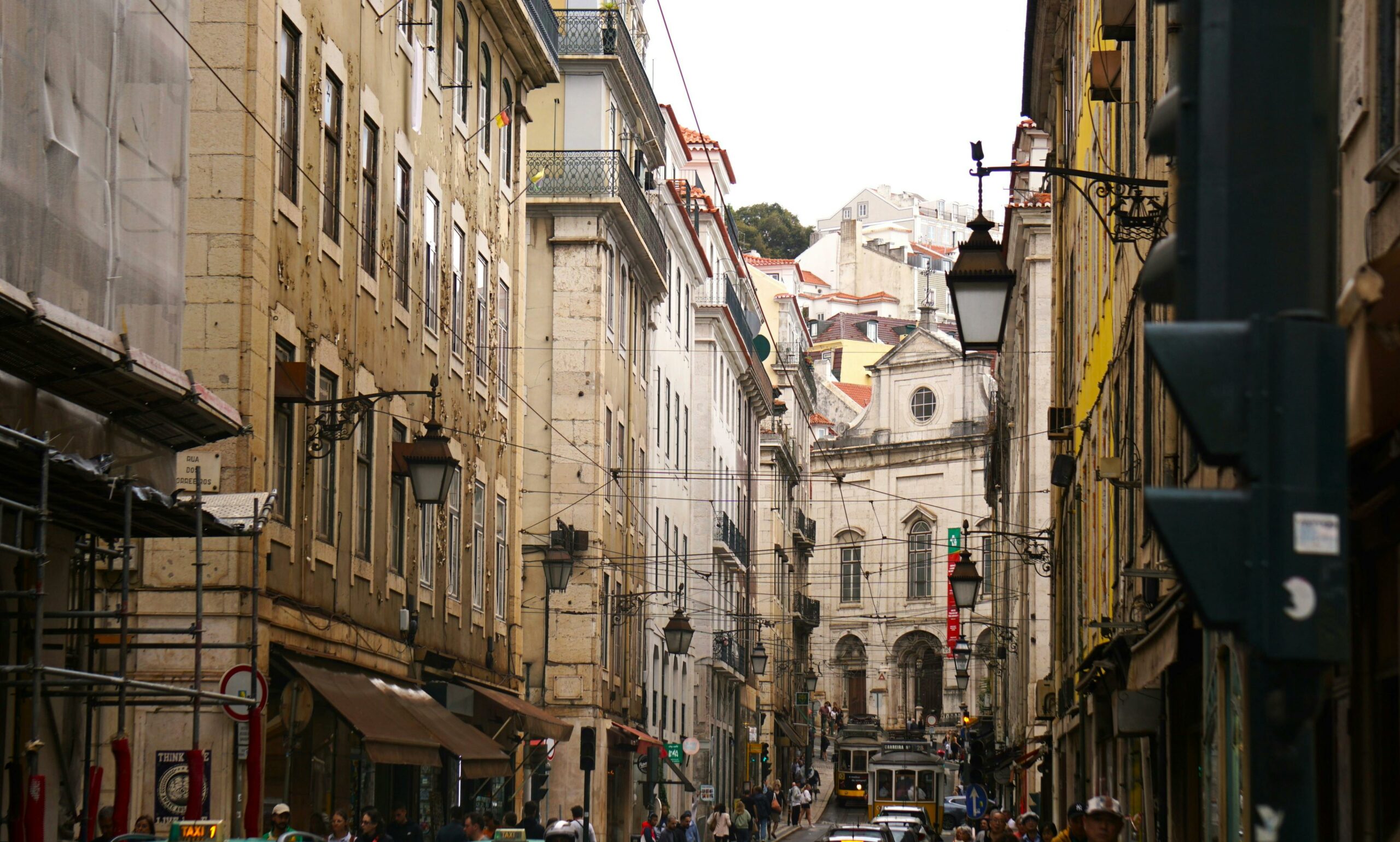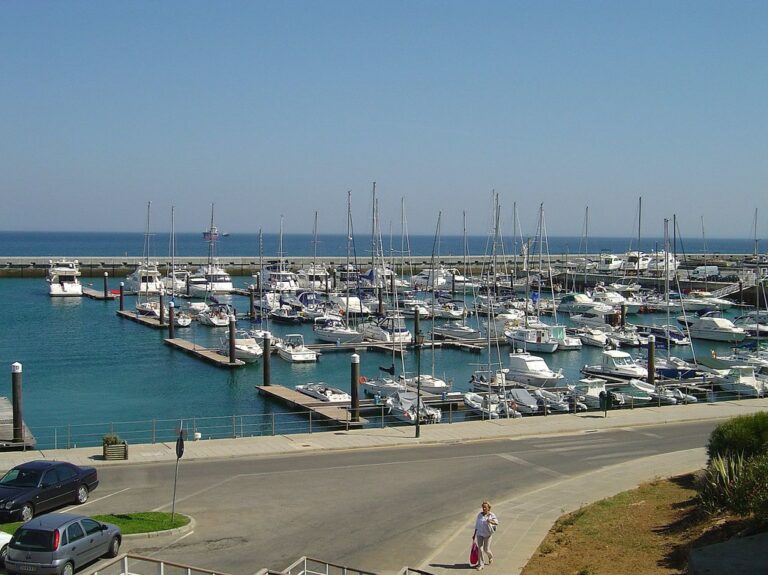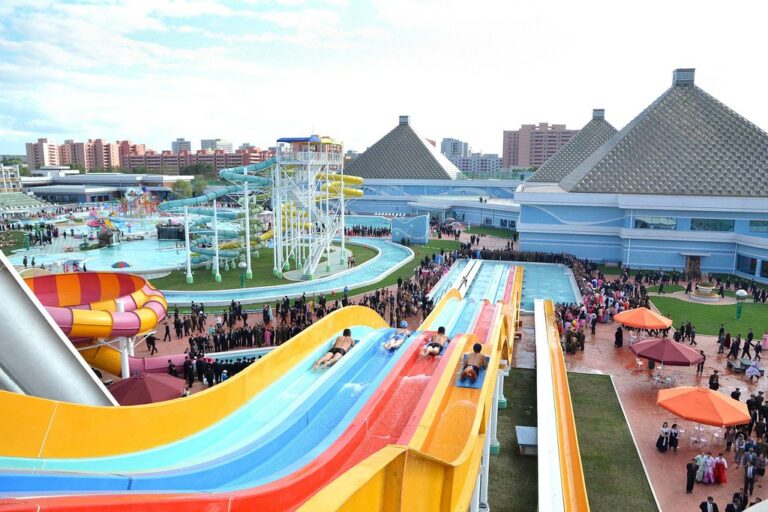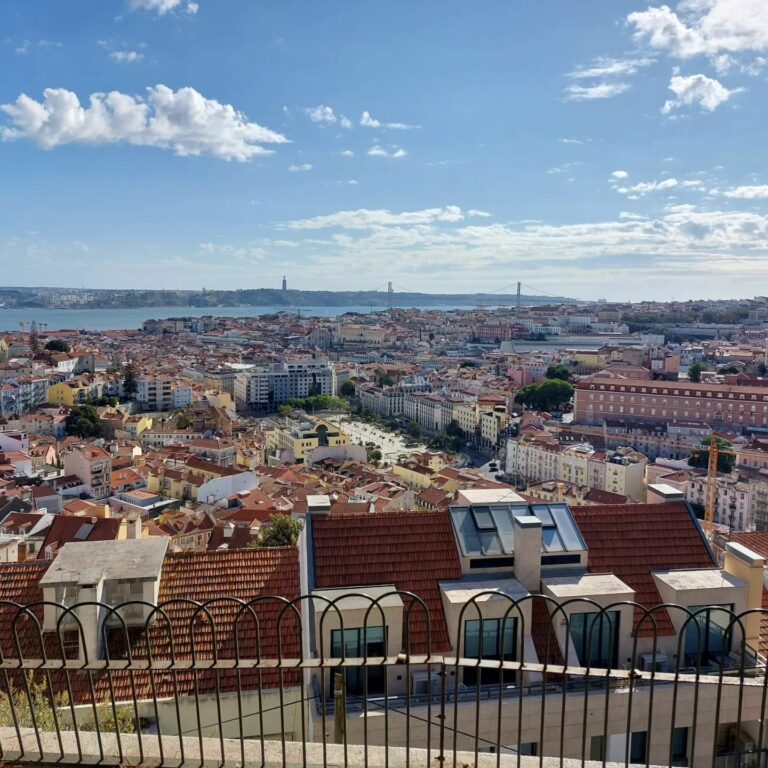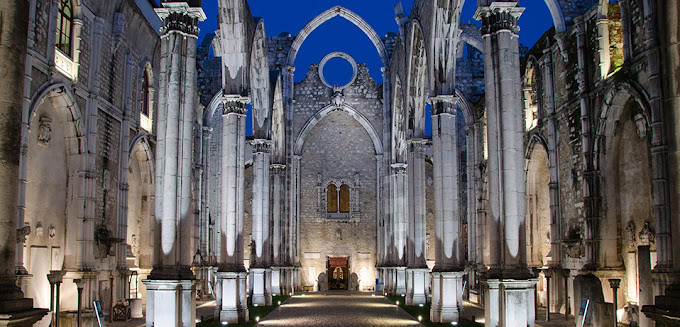You do not need to spend a fortune on guided tours when visiting the Portuguese capital.
Instead, explore these self-guided walking tours to see the architectural styles, noteworthy attractions, and panoramic views.
Here are three self-guided walking tours for you to explore:
Self-Guided Walking Tour 1: Lisbon Introduction Tour
The Lisbon introduction tour takes around two hours and covers 2.1 miles (3.3 km). The detailed walking route and attractions along the way are shown on the map.
1. Commerce Square
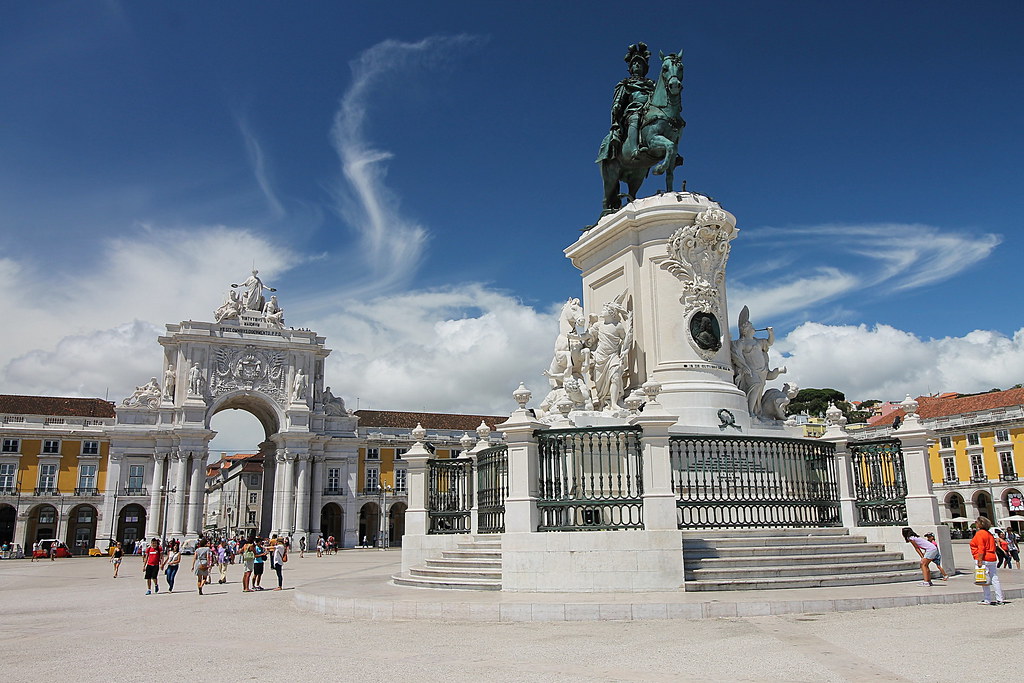
Start your self-guided walk in Lisbon at Commerce Square, a famous public space. The 35,000 square meter square features an equestrian statue of King Jose as the centerpiece.
The pedestal also features an elephant on the eastern side and Arco da Rua Augusta, a triumphal arch, on the northern side. Don’t forget to visit Cais das Colunas at the riverfront pier, known for its noble entrance during the maritime era.
Hot Tip🔥: Explore my guide here to learn more about the square. To see what the square looked like before the earthquake, head to Miradouro de Santa Luzia in Alfama to see a modern ceramic tile mural.
2. Rua Augusta Arch
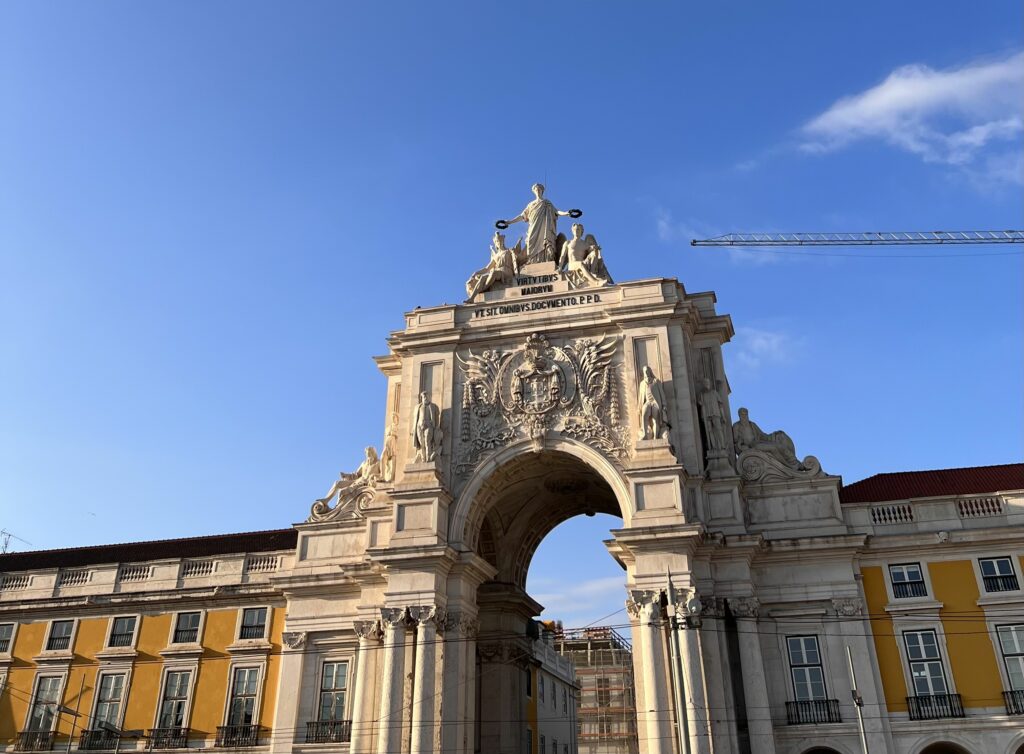
While at Commerce Square, head to the northern side to explore Arco da Rua Augusta. For €3, you can explore the iconic arch and see the panoramic views over Praça do Comércio.
Here, you will see the narrow streets branching off Rua Augusta, which you do not see at the street level. Here is where you will go next, giving you an ideal opportunity to reach other attractions.
3. Santa Justa Lift
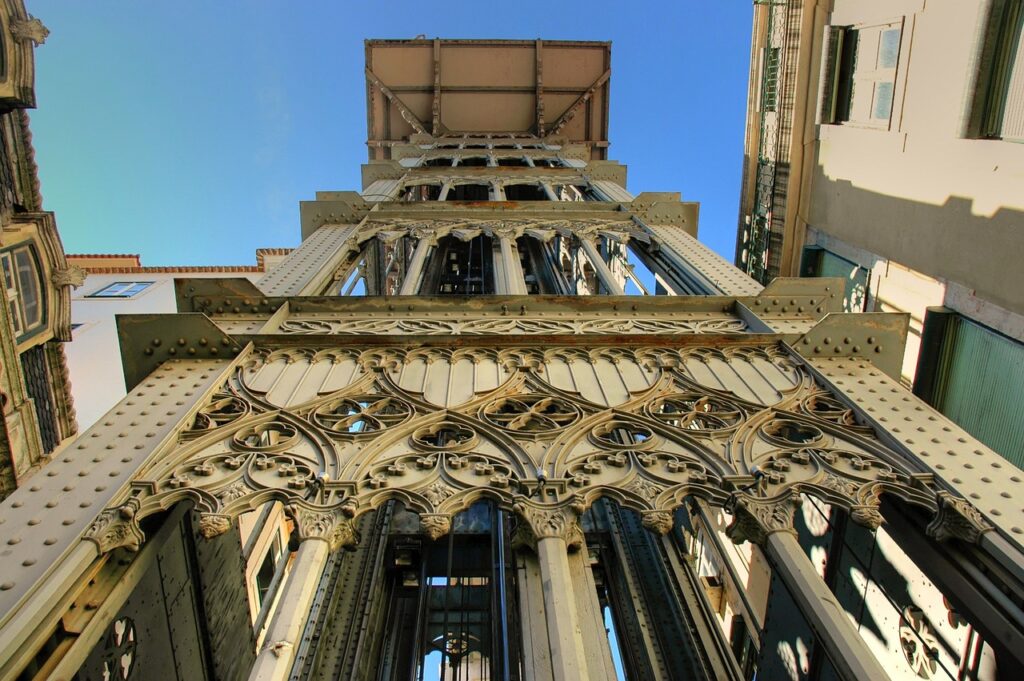
As you walk underneath the Arco da Rua Augusta, walk along Rua Augusta to view the shops before reaching another distinctive attraction, the Santa Justa Lift.
Even if you do not travel with it to the top, the vertical street elevator is a must-see. If you travel to the top, you will get views of the Baixa district, Rossio Square, and Sao Jorge Castle. The iron lace exterior of the neogothic style is a standout.
Hot Tip🔥: Instead of standing in queues, enter the cork store on Rua do Carmo and walk up the stairs to cross the street with a walkway. You’ll then have more opportunities to savor the views.
4. Carmo Fountain & Square
Visit the Chafariz do Carmo fountain, built between the 15th and 18th centuries, in Largo do Carmo Square next to the convent.
This Baroque fountain is framed by an elegant porch with four grand pillars.
The shaded plaza also features the Archaeological Museum, the National Guard headquarters, and top-notch restaurants with outdoor seating.
5. Archaeological Museum
Visit the archeological museum in Carmo Convent overlooking Rossio Square facing Lisbon Castle Hill.
The archaeological museum is also worth a visit. It features artifacts from different periods of Portuguese history. You can explore a collection of fountains, tombs, and more in the exhibition spaces.
Hot Tip🔥: If you want to return to the city center, it is best to take the Santa Justa Lift, which you can access via the footbridge at Bellalisa Restaurant. Also, check out some of these other museums in Lisbon.
6. Igreja de São Roque
Visit Igreja de São Roque, the oldest Jesuit church in Lisbon, now managed by the Lisbon Holy House of Mercy.
Although it has a plain 16th-century facade, the interior dazzles with gilded altars, alabaster, marble, amethyst, and lapis lazuli.
The church also showcases exquisite azulejos. If you have time, check out the São Roque Museum, which features antiques and artwork.
7. Miradouro de Sao Pedro de Alcantara
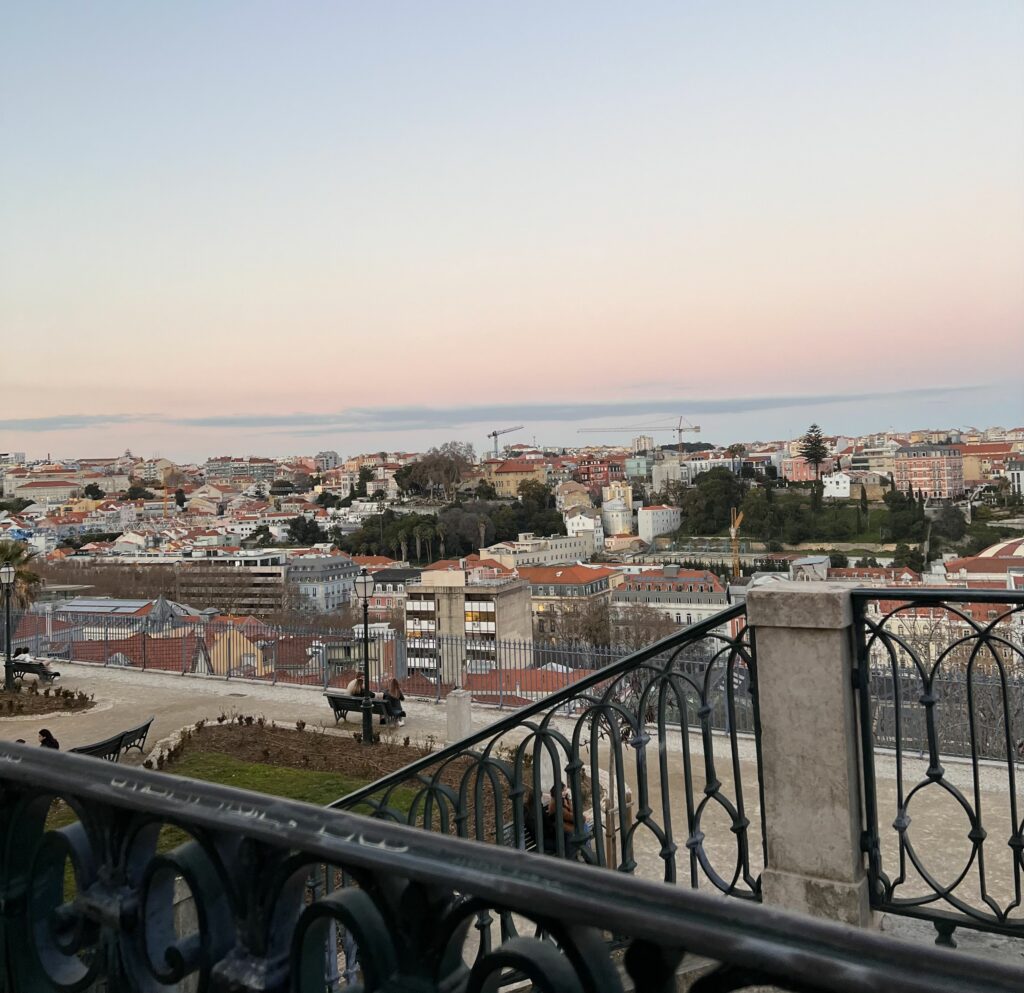
Head to Saint Peter’s viewpoint, where a small terrace offers a breathtaking city view.
On the upper level is a charming fountain with a newsboy statue. Then, descend to the lower level to find flower beds with sculptures and a small waterfall.
On the lower level, there are benches where you can relax, and you can find kiosks to buy food.
Across the street is another 18th-century building, Solar do Vinho do Porto, where you can savor some Port wine.
8. Gloria Funicular
Explore the historic Lisbon tram system, established in 1885, and a national historic site since 2002. Near a famous lookout point, this vintage tram links Praça dos Restauradores to Rua de São Pedro de Alcântara.
The ride covers about 270 meters and takes 2-3 minutes uphill and 5-8 minutes downhill. Enjoy stunning street art along the route, especially on the right side when going uphill.
It’s a unique transportation experience with excellent photo opportunities and a perfect start to exploring Bairro Alto.
9. Avenida da Liberdade
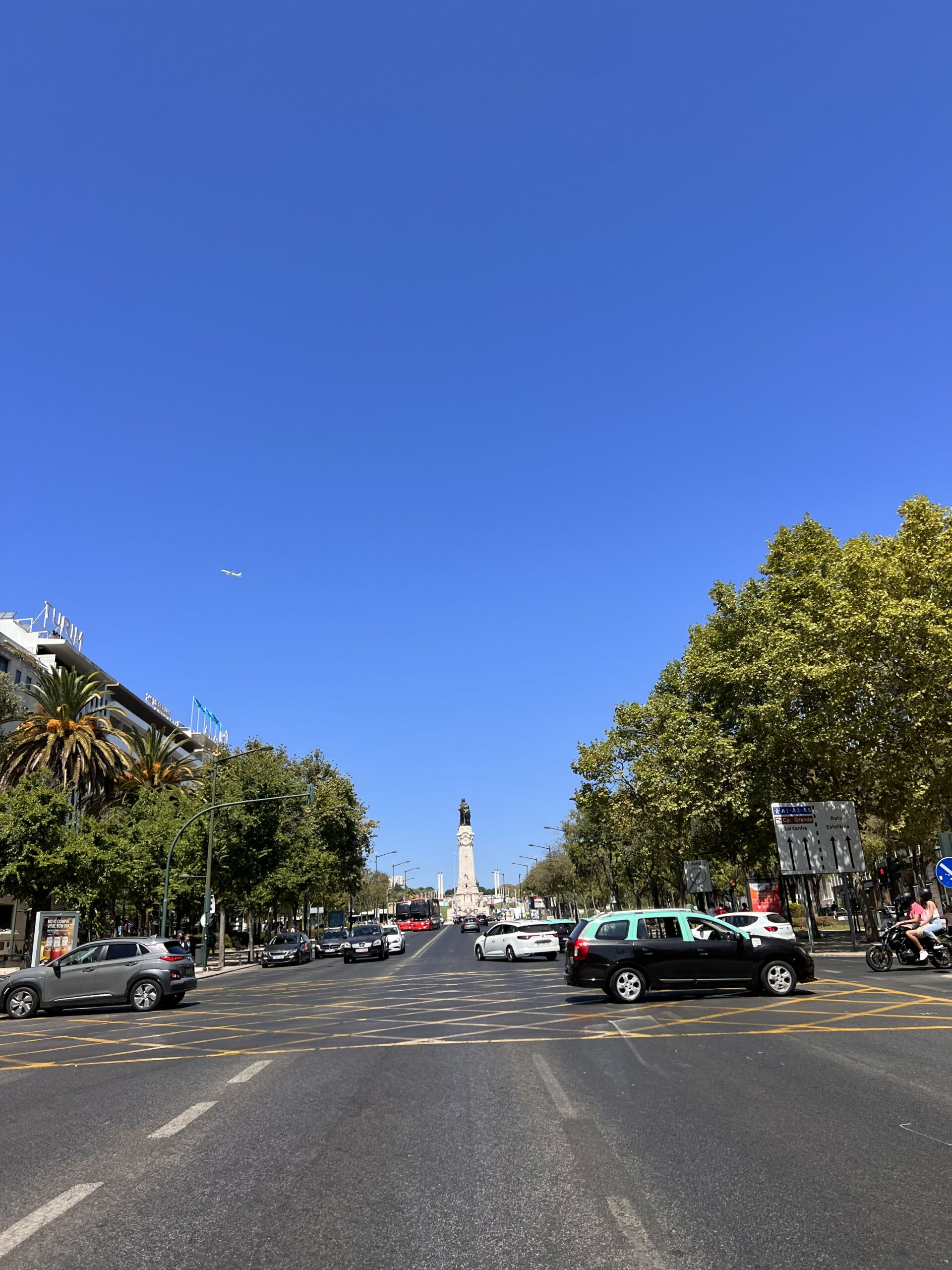
This grand, tree-lined promenade features cobblestone paving, high-end boutiques, and chic bars.
Stroll past 19th-century architecture, marble ponds, and cascades symbolizing the Douro and Tagus rivers. Enjoy landscaped gardens with statues representing continents and upscale shops like Armani and Louis Vuitton.
The avenue ends at Praça Marquês de PombalSquare, near Parque Eduardo VII.
10. Praça dos Restauradores (Restorers Square)
At the southeast end of Liberty Avenue, this square commemorates Portugal’s 1640 independence. Its centerpiece is an obelisk honoring the Portuguese Restoration War.
Surrounding the square are 19th- and 20th-century buildings, including Palácio Foz, which houses the Portuguese Tourist Office.
The square features notable architecture, such as the former Éden Cinema and Condes Cinema, now home to Lisbon’s Hard Rock Cafe.
11. Praça do Rossio (Rossio Square):
A historic gathering spot since the Middle Ages, Rossio Square features wavy Portuguese pavement, Baroque fountains, and a column honoring King Pedro IV.
Nearby attractions include the National Theatre Dona Maria II, historic Largo São Domingos, and Rossio Train Station.
The area is lively with cafes, restaurants, and Rua das Portas de Santo Antão, known for its food scene.
12. Praça da Figueira (Fig Tree Square):
Once Lisbon’s primary market, this square now serves as a transport hub. The Mercado da Baixa offers Portuguese cuisine and refreshments.
Enjoy views from surrounding cafes, including FIGUS and BASTARDO. The square features an equestrian monument to King João I, commemorating his long and significant reign.
13. Castelo de São Jorge
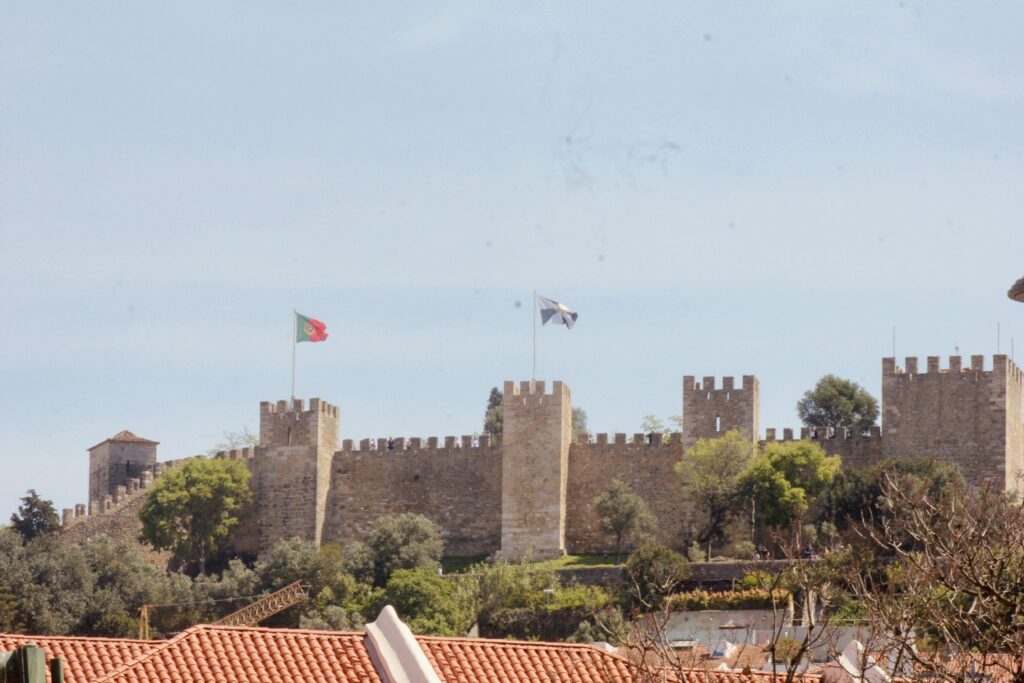
This medieval castle offers a panoramic city view of Lisbon’s highest hill. Explore the castle, gardens, and terraced square. Facilities include restaurants, cafes, and a wine bar.
Planning On Going To Lisbon?
I’ve created a trip planner where you enter the number of days you’re going and what activities you want to do.
Based on your input, you then get an entire vacation planned with ideas.

Self-Guided Walking Tour 2: Alfama
The next Lisbon walking tour is through Alfama, which has historic buildings and is on the same route as the famous Tram 28.
The travel distance is 1.9 miles (3 km) and takes around two hours. Check out my complete guide to walking Alfama here.
The detailed walking route and attractions along the way are shown on the map.
1. Santa Maria Maior
Lisbon’s oldest church, Santa Maria Maior, was built in 1147 after the Christian conquest.
The cathedral features robust stone walls and fortress-like towers. It also has Gothic arches, vaulted ceilings, stained glass, and notable chapels dedicated to saints.
Excavations reveal artifacts from various periods, including the Visigothic and Roman eras.
Hot Tip🔥: Admission is free, but for a small fee, you can visit the Treasury and part of the tower between 10 a.m. and 5 p.m. (it is closed on Sundays).
2. Igreja de Santo Antonio de Lisboa
St. Anthony, born in Lisbon, has a church dedicated to his birthplace.
The current Baroque and Pombaline church replaced the original one destroyed in the 1755 earthquake. Inside, a tile panel commemorates Pope John Paul II’s 1982 visit.
The church also features altars dedicated to Saint Anthony, a matchmaker and protector of marriages. In June, Lisbon celebrates Saint Anthony with vibrant festivals.
3. Castelo de São Jorge
Perched on Lisbon’s highest hill, Castelo de São Jorge offers stunning views of the city and the Tagus River.
Initially surrounded by a protective wall, this medieval castle includes a central castle, royal palace ruins, gardens, and a terraced square.
Inside, you’ll find restaurants, cafes, and peacocks roaming the grounds.
Hot Tip🔥: The steep climb to the castle provides excellent photo opportunities and the chance to explore the narrow streets and local cuisine.
4. Miradouro de Santa Luzia (Santa Luzia Viewpoint)

Miradouro de Santa Luzia offers a picturesque view of Alfama’s rooftops and the Tagus estuary.
Its charming garden includes azalea trees, seating under pergolas, and traditional “azulejo” tiles depicting historical events.
A small café and nearby restrooms are available. It’s a short walk from the Portas do Sol Viewpoint, so visit both for a complete experience.
5. Miradouro das Portas do Sol
Portas do Sol, named after an ancient Moorish gate, provides fantastic views of São Vicente de Fora Church and the Alfama district.
The viewpoint features a balcony-like platform and a statue of São Vicente. Nearby, explore a mural depicting Lisbon’s history in a comic-book style.
6. Miradouro da Graça
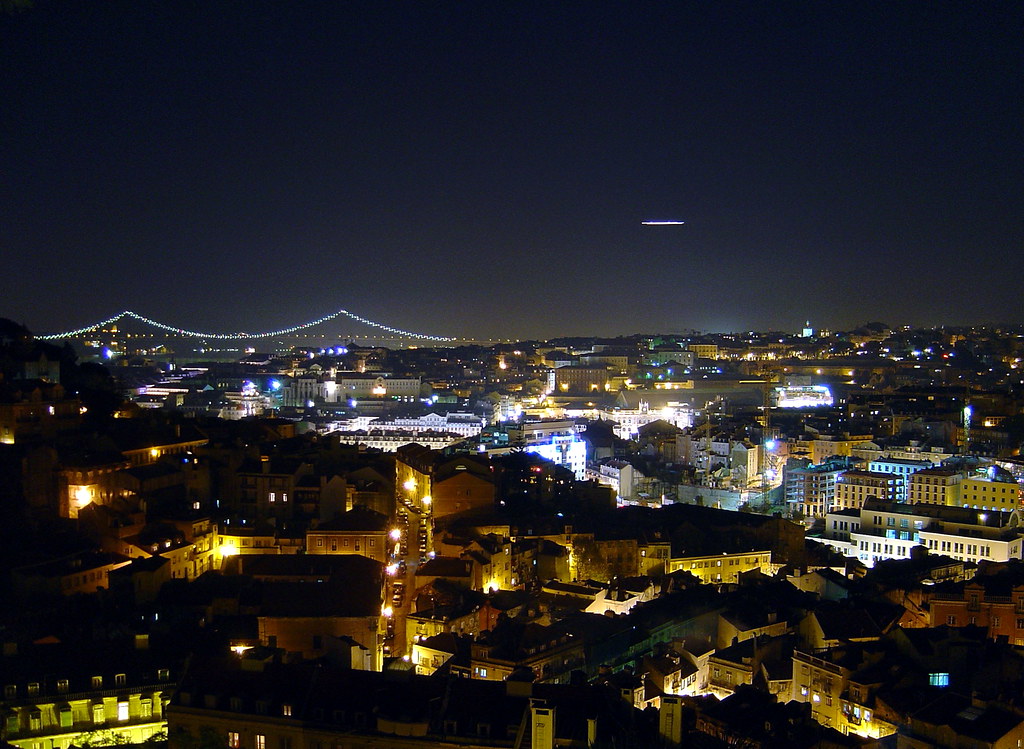
Officially named Miradouro Sophia de Mello Breyner Andresen, this viewpoint is popular with locals and offers breathtaking views of Lisbon and the Tagus River. It features a café in the shade of pine trees and is often a final stop for those from Alfama and Saint George’s Castle.
7. Graça Church and Convent
Graça Church was rebuilt in Baroque style after the 1755 earthquake in 1271. Its opulent interior features grisaille paintings and gilded woodwork. The convent, accessible to the public since 2017, includes historical tiles and elaborate decor. The adjacent convent offers panoramic views of Lisbon from the city’s highest lookout point.
8. Monastery of St. Vincent Outside the Walls
This 17th-century monastery, dedicated to Lisbon’s patron saint, is a prime example of late Renaissance architecture with Mannerist features. It houses the tombs of the House of Braganza and features stunning ‘azulejo’ tilework.
9. Panteão Nacional (National Pantheon)
The National Pantheon, recognized by its towering white dome, began construction in 1682 and was completed in 1966.
It houses notable Portuguese figures and features an innovative design with a centralized Greek cross-floor plan.
The interior includes an 18th-century baroque organ and intricate marble patterns.
10. Lisbon Military Museum
Located on the site of a 16th-century shipyard, this museum showcases Portugal’s military history with exhibits of artillery, weaponry, and uniforms. Highlights include Vasco da Gama’s sword and a 14th-century cannon.
11. Fado Museum
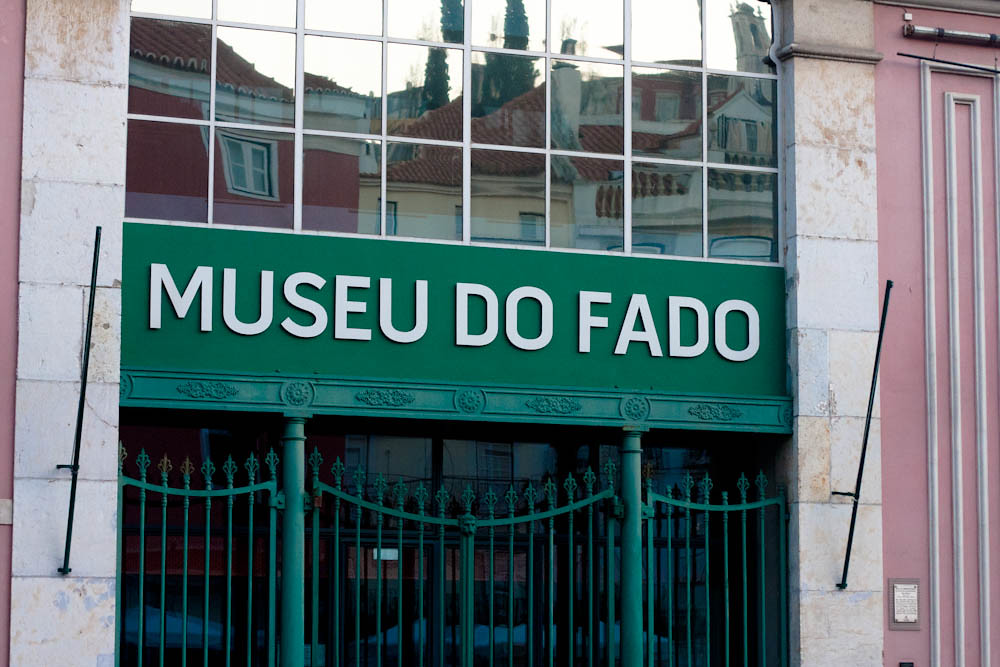
This museum is dedicated to Lisbon’s beloved Fado music. It features audiovisual presentations and a music archive.
On weekends, you can learn about the genre’s evolution and enjoy live performances at the museum’s café.
The surrounding area offers a glimpse into local life with historic houses and old taverns.
Hot Tip🔥: With this self-guided tour, you can explore Lisbon on foot, saving you some money on transport. But there are many other ways to visit Lisbon on a budget to save even more. Check it out today.
Here are the best things to do in Lisbon In September 2024
I’ll send you a list of the best things to do in September and every month moving forward from today.
It’ll be based on my personal experience of living and traveling around Lisbon for years. I’m sharing a lot of hidden gems. 🇵🇹
Self-Guided Walking Tour 3: Belem
Last on our list is a 1.9-mile (3 km) walking tour of Belem, which will take around two hours.
The detailed walking route and attractions along the way are shown on the map.
1. Museu Nacional dos Coches

Founded in 1905 by Queen Amélia, this museum houses the world’s most extensive collection of historic carriages from the Portuguese royalty. Highlights include a 17th-century royal coach and ornate Baroque carriages. The original Royal Riding Hall and the modern museum offer fascinating insights into carriage history.
2. Pasteis de Belem
This iconic bakery, established in 1837, continues the tradition of ‘pastéis de nata’ (custard tarts) developed by monks at the Jerónimos Monastery. Enjoy these fresh creamy pastries with options for takeaway to avoid long lines. Make sure to arrive early or opt for takeout to bypass queues.
3. Jardim Botanico Tropical
Also known as Jardim do Ultramar, this peaceful garden showcases rare tropical and subtropical plants. Notable features include dragon and monkey puzzle trees and a charming Chinese-inspired garden.
Hot Tip🔥: Check out my detailed guide on traveling from Lisbon to Belem to plan your trip.
4. Mosteiro dos Jerónimos
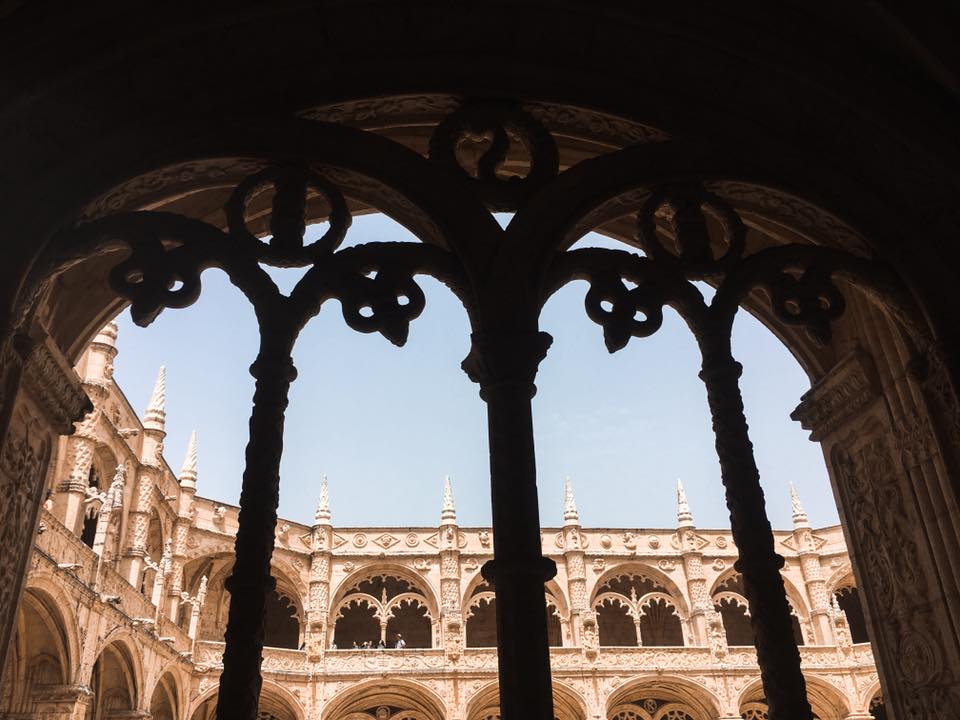
Built to celebrate Vasco da Gama’s voyage, this UNESCO World Heritage site features stunning Manueline architecture and the tombs of Portugal’s greatest figures. Highlights include the intricately carved cloisters and the Church of Santa Maria.
Hot Tip🔥: Buy a combined ticket with the Archaeological Museum to skip long lines.
5. Museu de Marinha
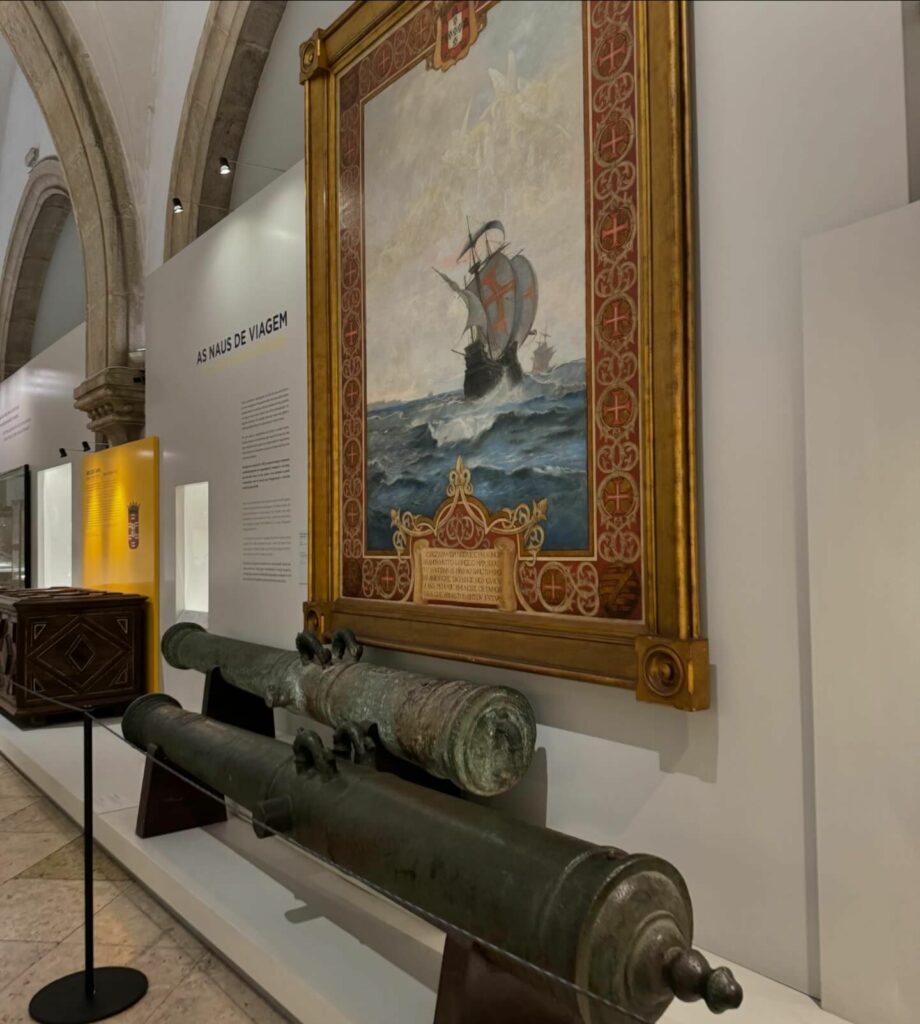
Portugal’s Navy Museum comprehensively examines the nation’s maritime history with ship models, historical paintings, and full-sized vessels. Don’t miss the section with historic aircraft and the gift shop with café.
Hot Tip🔥: Check out my Lisbon to Belem self-guided walking tour here.
6. Museu Colecao Berardo
This modern art museum, built by José Berardo, features over 1,000 works from 500 artists, including Warhol, Picasso, and Koons. The museum offers a deep dive into contemporary art in a striking space.
Hot Tip🔥: Visit the adjacent café for a quiet break and good food.
7. Centro Cultural de Belem
This cultural center, built for the Portuguese EU presidency, hosts various artistic events and houses the Berardo Collection Museum. The building’s design and its surrounding gardens offer scenic river views.
8. Praca do Imperio
Empire Square features formal gardens, a large fountain with beautiful views, and a historical monument dedicated to poet Augusto Gil. It’s a popular spot for relaxation and photography, especially on weekends.
Hot Tip🔥 Explore the finest restaurants on Rua Vieira Portuense for better value as you head east. Also, check out some of these other restaurants.
9. Padrao dos Descobrimentos

This striking 52-meter monument celebrates the Age of Discovery with statues of crucial historical figures, such as Vasco da Gama. Inside, an elevator offers panoramic views of Lisbon and the Tagus River.
Hot Tip🔥 Look for the “Rosa-dos-Ventos” mosaic map at the monument’s base for a unique historical perspective.
10. Torre de Belem

A symbol of Lisbon and a UNESCO site, this Manueline tower initially defended the port and now offers panoramic river views from its terraces. Explore its various levels and learn about its historical uses.
11. Forte do Bom Sucesso & Museu de Combatente
Originally a defense fort, it is now a museum dedicated to Portugal’s military history. The site includes exhibitions on World War I, colonial campaigns, peacekeeping missions, and a monument to fallen soldiers.
Hot Tip🔥: The €4 entrance fee is worth it for the historical insights and views.
Wrap-Up: Self-Guided Walking Tour Lisbon
I hope these self-guided walking tours are helpful and enjoyable as you explore Lisbon.
These tours offer a fantastic way to experience the city’s architecture, historical landmarks, and panoramic views at your own pace.
Whether you’re interested in the rich history of Commerce Square, the stunning views from the Santa Justa Lift, or the cultural charm of Avenida da Liberdade, Lisbon offers something for everyone to appreciate.
So, grab a map, put on some comfortable shoes, and get ready to uncover the beauty and charm of this fascinating city on foot.
